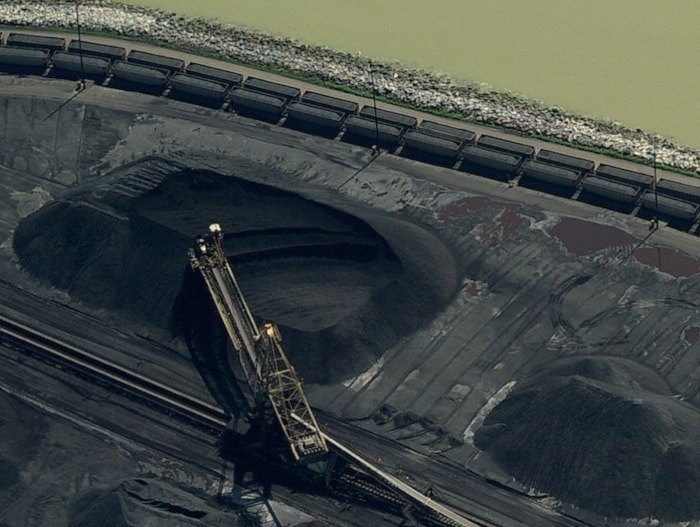An environmental impact assessment (EIA) ordered by Port Metro Vancouver has concluded a proposed coal export terminal in Surrey won't harm human health or the environment.
The report, conducted by SNC-Lavalin for Fraser Surrey Docks, was released Monday, triggering a 30-day public comment period that ends Dec. 17.
"After consideration of the potential residual effects, and taking into account engineering design and identified mitigation measures, the project can be constructed and operated without significant adverse effects," it says.
The findings have been denounced as inadequate by the Lower Mainland's chief medical health officers, Dr. Patricia Daly and Dr. Paul Van Buynder, who say it falls far short of the comprehensive health impact assessment they wanted.
The health officers also question the findings in multiple areas, from reliance on dated studies to its focus on impacts near the terminal area rather than the BNSF rail corridor.
An alliance of environmental activists and local residents along the railway through White Rock, Surrey and Delta have campaigned for months against the new terminal, citing concerns ranging from climate change to dust coming off coal trains.
The $15-million Surrey terminal would initially handle four million tonnes per year of U.S.-mined thermal coal – adding one extra coal train per day – but could later expand.
The EIA did not consider the emissions contributing to climate change from the eventual of burning of the U.S.-mined thermal coal in Asia.
On the question of increased local air pollution, the report concludes there is no elevated risk either from construction or any phase of operations.
"Fugitive dust and diesel emissions associated with the project are not predicted to be associated with adverse health effects for the general public," it says, adding the projected impact on air quality in the area is "low."
Air quality modeling indicates particulate from coal dust and diesel exhaust will be localized around the terminal, it says, with emissions above regional air quality objectives expected only along the fence line, and concentrations quickly diminish further away.
It says monitoring of actual coal trains has shown dust concentrations would be indistinguishable from normal levels at a distance of 10 metres from the tracks.
The report says the predicted average coal dust and diesel particulate levels from the operation are estimated to be a maximum of 1.4 micrograms per cubic metre at the nearest residential receptor, compared to a WorkSafeBC exposure limit of 400 to 900 micrograms per cubic metre for workers handling coal for hours a day over a lifetime.
"The predicted coal dust levels are approximately 286 to 643 times lower than the occupational limits recently established by WorkSafeBC for coal dust."
Coal shipments' particulate contribution would make up just five per cent of the maximum 32 micrograms of particulate from all sources.
It also cites tests conducted in July by Delta for coal dust in Tsawwassen near the existing Westshore Terminals, which already handles six times as much coal as proposed at Fraser Surrey Docks.
They turned up "very low" levels of coal dust and air quality well within regional objectives.
The report notes dust suppression agents will be reapplied to coal train cars by BNSF Rail halfway between the mine and the Surrey terminal and they'll be added again to barge loads as they depart for Texada Island, where coal would be reloaded to ocean-going ships.
Air quality impacts from barges on the Fraser River would be "low to negligible" and no impact is expected to fisheries. The barges amount to a 1.5 per cent increase in vessel traffic on the river.
Another concern raised by the public that health officers say remains unresolved is that more frequent coal trains may impede emergency vehicle access to some neighbourhoods.
The EIA report says coal trains will be scheduled to avoid peak traffic times in the Lower Mainland, although it added schedules may vary.
Fraser Surrey Docks would fund continuous air quality testing and quarterly reports could lead to adjustments if unexpected pollution levels are detected.
Mayors from White Rock and New Westminster said it was too early to comment on the findings.
Kevin Washbrook, of the group Voters Taking Action on Climate Change, also said he hasn't yet had time to study the report in detail, but added he has no confidence in the results because it was completed in less than two months.
"This appears to me to be window dressing done by the proponent and industry insiders to justify approval," Washbrook said.
"Frankly, if the health authorities aren't satisfied, I'm not either. If they're saying this thing is a joke, I'll accept that as authoritative."
Port Metro Vancouver has the final regulatory say on whether the project gets the green light or not and port officials have indicated a final decision could come soon after the comment period ends.
The full report and details on how to comment can be found at http://portmetrovancouver.com/en/projects/OngoingProjects/Tenant-Led-Projects/FraserSurreyDocks.aspx
